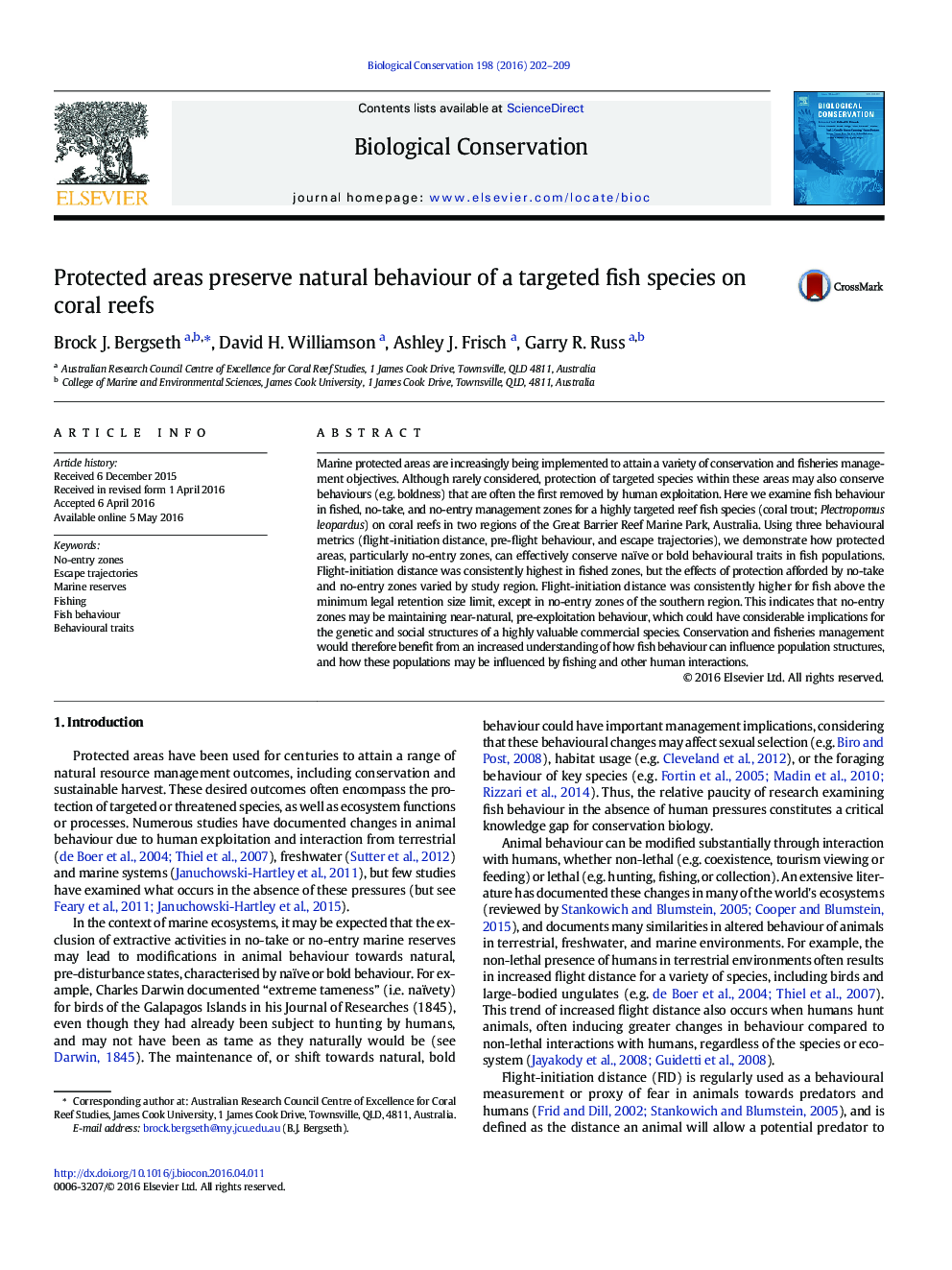| کد مقاله | کد نشریه | سال انتشار | مقاله انگلیسی | نسخه تمام متن |
|---|---|---|---|---|
| 4385027 | 1617903 | 2016 | 8 صفحه PDF | دانلود رایگان |
• We used three behavioural metrics to examine how protection influences fish behaviour.
• Fish behaviour was markedly different in geographically isolated human exclusion (no-entry) areas.
• These areas may be preserving near-natural, pre-exploitation behaviour.
• Future research should examine how behaviour affects genetic and social population structures.
Marine protected areas are increasingly being implemented to attain a variety of conservation and fisheries management objectives. Although rarely considered, protection of targeted species within these areas may also conserve behaviours (e.g. boldness) that are often the first removed by human exploitation. Here we examine fish behaviour in fished, no-take, and no-entry management zones for a highly targeted reef fish species (coral trout; Plectropomus leopardus) on coral reefs in two regions of the Great Barrier Reef Marine Park, Australia. Using three behavioural metrics (flight-initiation distance, pre-flight behaviour, and escape trajectories), we demonstrate how protected areas, particularly no-entry zones, can effectively conserve naïve or bold behavioural traits in fish populations. Flight-initiation distance was consistently highest in fished zones, but the effects of protection afforded by no-take and no-entry zones varied by study region. Flight-initiation distance was consistently higher for fish above the minimum legal retention size limit, except in no-entry zones of the southern region. This indicates that no-entry zones may be maintaining near-natural, pre-exploitation behaviour, which could have considerable implications for the genetic and social structures of a highly valuable commercial species. Conservation and fisheries management would therefore benefit from an increased understanding of how fish behaviour can influence population structures, and how these populations may be influenced by fishing and other human interactions.
Journal: Biological Conservation - Volume 198, June 2016, Pages 202–209
